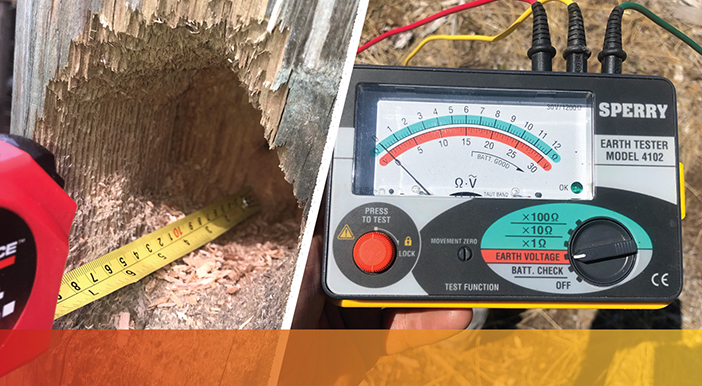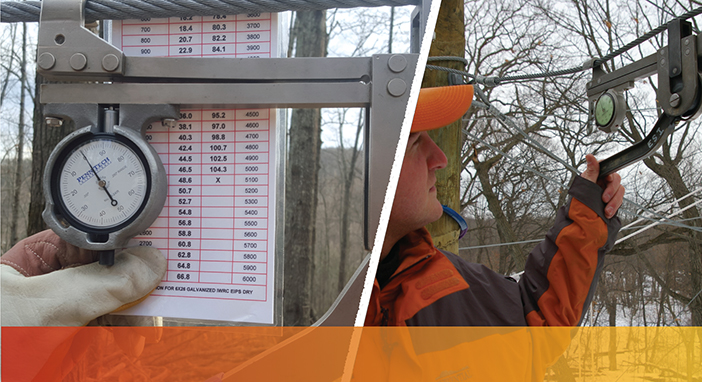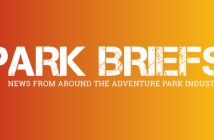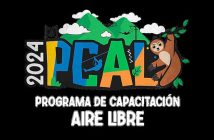Many challenge courses, zip lines, and aerial adventure parks subject themselves to an annual inspection from an outside vendor. But not all inspections are created equal. Some course owners and managers do not fully understand the differences between the various types of inspections—specifically, a typical annual inspection vs. a third-party inspection—and it’s good to know the differences.
Within the adventure park world there are generally three types of inspections: first, second, and third party. In simple terms, think of the first party as the seller and the second party as the buyer. A third party is someone who is neither the seller nor the owner, and is not affiliated with either in any way.
The International Standards Organization (ISO) offers detailed definitions for the three types of inspections:
First-Party Inspection: Typically, a quality control activity that is completed by the product or equipment vendor, manufacturer, or seller. For example, you may hire the course or equipment manufacturer to verify how its product is performing against a specific standard or the manufacturer’s own inspection criteria. First-party inspections are generally completed on an annual basis, or more frequently as required by the product manufacturer.
Second-Party Inspection: Typically refers to inspection activities that are completed by the individual or organization that has purchased the product or equipment. The challenge course industry often refers to these as “in-house” inspections, in which a course manager and staff inspect the course on a daily, weekly, or monthly cycle in compliance with both manufacturer requirements and industry standards.
Third-Party Inspection: Refers to inspection activities that are completed by an independent person. The third party may be hired by a buyer or seller to inspect to a known industry standard, contracted specifications, and/or course manufacturer’s technical manuals and notices.
Third-Party Inspectors
This article is really about understanding the need and value of a third-party inspector. An outside inspector can remove speculation or doubt about the integrity of the person or company performing the inspection, as well as elevate the industry through accountability and refined practices. It may also be required by law.
So, in what situation would an adventure park or experiential program use a third-party inspector? It may be required by industry standards such as ACCT, PRCA, or ASTM; it may be required by the operator’s insurance provider and risk management team; or the operator may be subject to one of a growing number of Authorities Having Jurisdiction (AHJ) that require third-party inspections by law. This might include the law or code of your state or province.

Photos, left to right: 1. Inspectors are trained to look for small deficiencies, such as broken strands of wire rope; 2. A go/no-go gauge helps determine when to retire a wire rope; 3. Sometimes third-party inspectors must brave the cold, especially if an operation wisely schedules its inspection well in advance of the season;
It Might be the Law
An increasing number of states have adopted some degree of regulation of zip lines and challenge courses, and obtaining an operating permit often hinges on compliance with state-wide inspection requirements. Many AHJs require a third-party inspection within the regulatory code.
Colorado, for example, recently revised the state definition of third-party inspection providers used by the department responsible for regulating amusement rides. The Department of Labor and Employment Division of Oil and Public Safety states that a third-party inspector (required for new installations and all major modifications), “shall not be affiliated by employment or Subsidiary Relationship to the Operator of the Amusement Ride or Device, or the manufacturer, whose modification or new installation is being inspected.”
Tennessee has similarly adopted the ISO classification of third-party inspectors in an effort to eliminate potential conflict of interest between operators, vendors, and inspectors. Many states, including Tennessee and Washington, also include language to specifically exclude inspectors from providing the initial inspection on any ride for which they have modified or repaired—eliminating the common industry practice of hiring one vendor to both repair and inspect a course each year.
The Washington State Department of Labor and Industries has one of the more narrow and prescriptive definitions of a third-party inspection. In addition to being unaffiliated with the installer and operator, “the inspector must not be a principal, owner, or employee of any amusement company or manufacturer doing business in the state of Washington, unless authorized by the department to conduct specific inspections on a case-by-case basis.” The rules even address potential sources of conflict in inspector business practices, requiring that inspectors “have an adequate diversity of clients or activity so that the loss or award of a specific contract regarding amusement ride or amusement structure safety certification would not be a deciding factor in the financial well-being of the inspector.”
These are just a few examples, but a requirement for third-party inspection is trending nationwide. Every park needs to ensure inspections are compliant with applicable state codes. Consider pending regulations and trends as you make decisions regarding your 2020 inspection season.
Managing Risk
In addition to regulatory agencies, insurance providers are now taking a much closer look at the aerial adventure and challenge course industry. They want assurances about the products and services they are covering in order to help mitigate losses. Similarly, with premiums on the rise, buyers and sellers are looking for ways to distribute liability. A third-party inspection is one means of simultaneously validating the quality of the product and sharing liability with another entity (the inspector).
As the insurance market continues to adjust to the growth and exposure in our industry, we may see more insurers requiring third-party inspections, or providing discounts to those operators that take advantage of them.

Photos, left to right: 4. Support pole damage is one flaw inspectors look for; 5. This wire rope clearly needs to be retired; 6. A portable tension tester measures the holding force of anchors.
Independent Assurance
A third-party inspection is a great way to ensure that a new product has been installed in accordance with the contract, the engineering plans, and the correct standards. Further, the inspector should be able to determine if the course can be operated appropriately with the manual and the equipment provided.
This sort of assurance benefits all parties. An acceptance inspection conducted by a third party validates a vendor’s compliance with standards or a contract, and removes any question regarding intent when an inspector fails a component or element. (Some vendors have been accused of failing their own product to increase sales of replacement equipment or maintenance services.) Similarly, a third-party inspection can help owners separate their wants from needs.
Potential conflicts between the buyer, seller, and inspector can be alleviated early if the seller (i.e., builder) includes the third-party inspection in the installation contract and develops a relationship with a variety of inspection firms. By communicating clearly and anticipating what an inspection provider will want to see, buyers and sellers can be prepared with the right content to ensure there are no hiccups in getting the new installation or modification operational.
Potential conflicts persist unless the inspector has ZERO financial stake in the operation, maintenance, or sale of any installation or equipment to the purchaser of the inspection. The inspector’s only goal should be the safety of the staff and users of the course or structure they inspect.
Because there is no other financial incentive than the inspection itself, third-party inspections typically cost slightly more than first- or second-party inspections.
Elevating the Industry
Third-party inspections also help vendors to refine their work and learn from others in the industry. Inspectors may lead vendors to develop or improve their documents, procedures, manuals, and field practices. Each inspection is an opportunity for vendors to view their work differently, and either validate their process or make changes. Third parties hold both owners and vendors accountable for their performance. In the end, both the buyer and seller have a better product.

Left: Inspectors often find damage caused by animals, such as woodpeckers. Right: An earth tester is used to measure ground resistance.
How to Vet a Third-Party Inspector
Who can act as a third-party inspector? That may be determined by an accredited status, certification or education credential, and/or local law. Essentially, third parties are verifiably knowledgeable in the standards being applied and course/systems being inspected, and are operating in compliance with the AHJ.
Here are some key steps to take when hiring any inspector, not just an independent third party:
• Check licenses. Ensure the company or firm is registered and licensed to conduct business in your state or province. If a conflict arises between you and the inspector that requires mediation or legal remedy, your options are better if the company is licensed and regulated.
• Verify local knowledge. Ensure the company and individual inspector are familiar with your jurisdictional requirements, laws, and codes. Simple errors, such as to which standard applies (such as ACCT or ASTM), can prove quite consequential.
• Look for certification. Ensure the company and inspector carry any licensure or certification required to conduct the inspection. Certification validates the inspector’s qualifications. Many states have adopted specific certifications, such as ACCT Certified Professional Inspector, the National Association of Amusement Ride Safety Officers (NAARSO), or the Amusement Industry Manufacturers and Suppliers Association (AIMS). But be sure you understand the nuances of each regulatory code. For example, while organizations like ACCT offer a supervisor endorsement for apprentice inspectors to be carefully supervised by a more qualified professional, many states require that the inspector on site is the one certified.
• Ask about specific experience. Ensure the individual coming out to perform the inspection has experience on the type of structure or equipment your facility uses, and has the needed insurance to perform the work.
• Check for conflicts. Ensure the individual and organization they work for is indeed a true third party and has no conflict of interest.
Put It in writing
A written contract or service agreement protects both the purchaser and the seller. As the purchaser, your contract should incorporate information from the vetting section (vendor is legally registered to do business in the state; inspector is licensed and certified in compliance with jurisdictional laws, and inspector is familiar with the specific structure and equipment type). A good contract will also include the following:
• Indemnification. Identify the responsibilities of each party, and agree to release the other party if they have no responsibility if a future claim arises.
• Timelines for Deliverables. Some companies return written reports within a few days; others can take months. Clearly state a turnaround time for the final report, say, three weeks, and require a written list of deficiencies, to be delivered by the inspector onsite or within 24 hours of the inspection.
• Scope of Services Definition. Define the type of inspection and the standards to be applied. Is it a commissioning, acceptance, or annual inspection? Is it a program or accident review? Know what’s being inspected, and how. Include your paperwork (manuals, records, forms, etc.) as part of the inspection, to ensure compliance with standards and regulations.
• Statement of Costs. Be clear on costs and what’s included in your contract and what’s not, such as expenses for travel. Specify how changes in the scope will be handled.
• Mediation. Select a venue for mediation or legal remedy that’s convenient for your organization if a conflict does ever come up that needs to be addressed formally.
• Legal Review. Have the agreement reviewed by a legal professional.
Update your contract regularly. Not only do standards change, as the ACCT and ASTM ones have in the past year, but regulatory requirements also change. Ensuring compliance to the law, not just the standards, should receive the same scrutiny as your structures.

Inspectors use a variety of instruments, such as the wire rope tension meter here, to quantify their work.
If Deficiencies Are Found
Unlike first-party and second-party inspectors, a third-party inspector cannot perform maintenance of your course. If he did, by definition he would no longer qualify as a third party. So, schedule the inspection well in advance of opening for the season, if possible. Allow time for the inspector to submit a report detailing any deficiencies that were found, and include time to complete the work. Note: Regulations may require that repairs or modifications are re-inspected by the third party; this is the case in the many jurisdictions that regulate our industry under the amusement codes.
We recommend developing a relationship with two or more vendors. These should include one or two specifically for third-party inspection services, along with your original installer or another vendor to address repair needs.
Final Thoughts
Third-party inspections are quickly becoming common practice in North America. They are valuable even for organizations that are not currently required by regulation to have one. Yes, a third-party inspection may increase costs. But the benefits can be substantial, including greater peace of mind. And that’s worth a lot.
Keith Jacobs, president of Experiential Systems Inc., has more than 25 years’ experience inspecting challenge course structures and is the current vice chair of the ANSI/ACCT Standards Consensus Group.
Corey Wall, owner of Challenge Design Innovations, has 25 years’ experience inspecting challenge course structures, and is a member of the ACCT Inspector Certification Panel.







